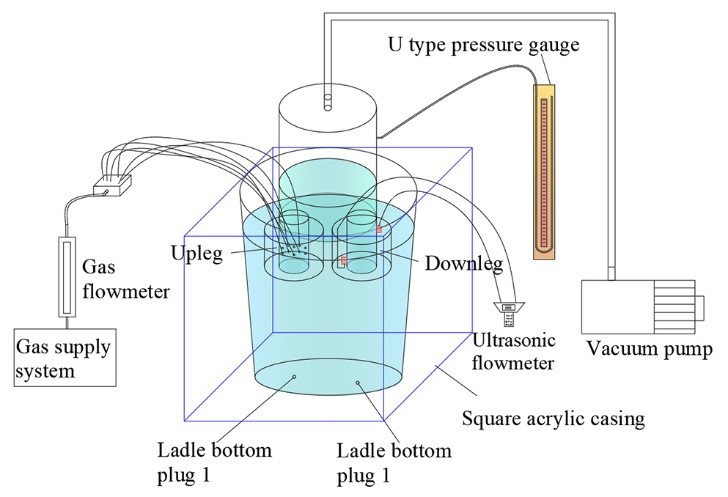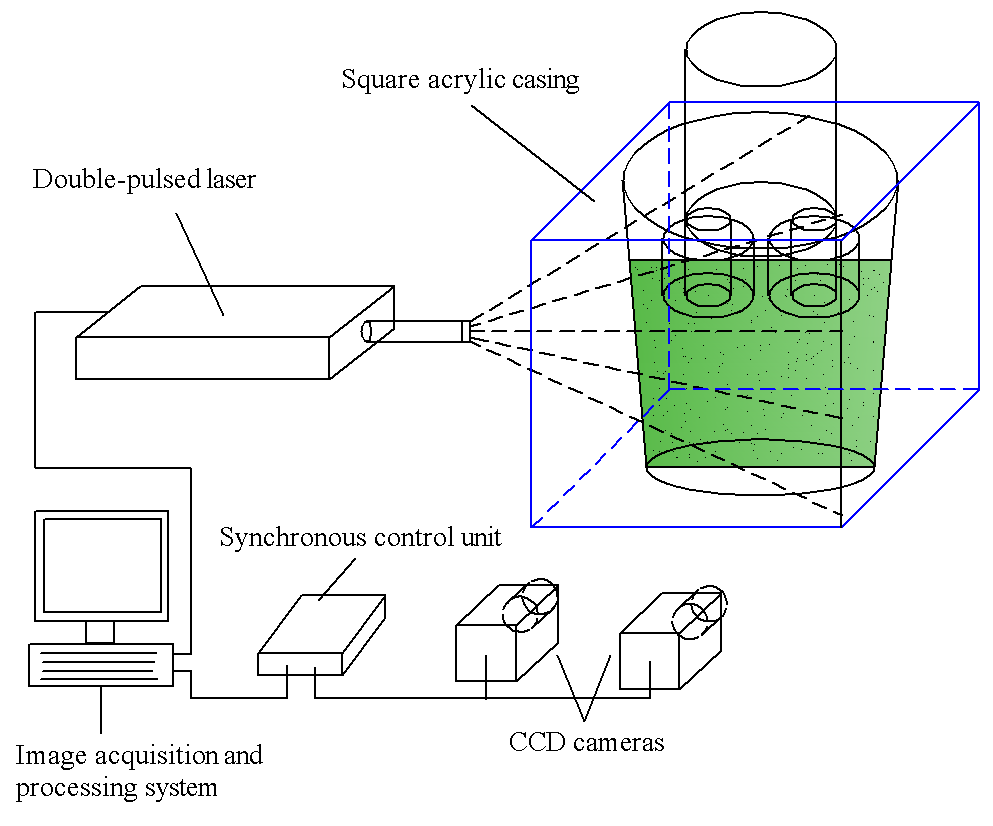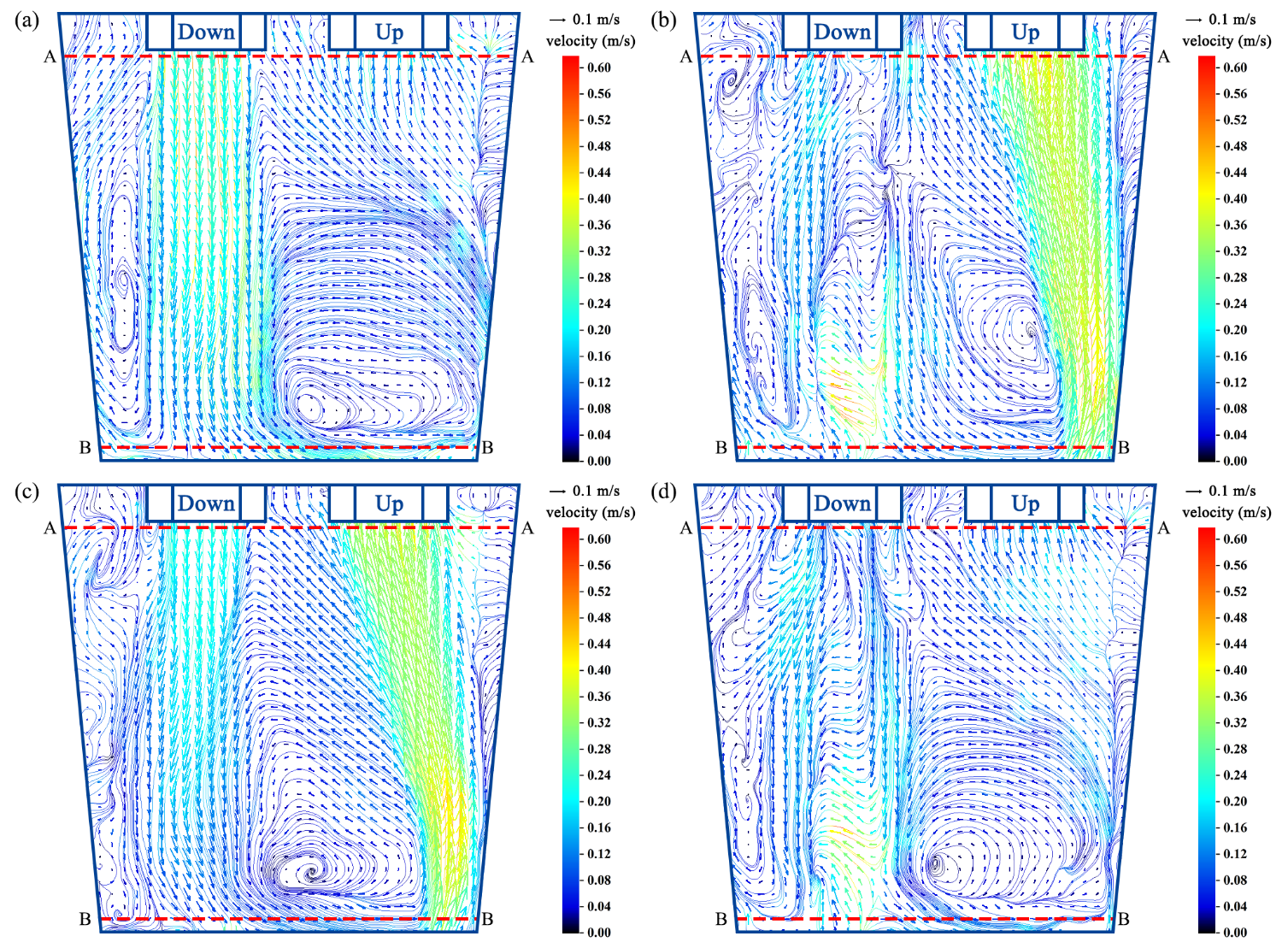RUDONG WANG1), YU JIN2), HENG CUI1) *
1) Collaborative Innovation Center of Steel Technology, University of Science and Technology Beijing, Beijing 100083
2) China National Institute of Standardization, Beijing 100191
The Ruhrstah–Heraeus (RH) refining unit has been widely used in the secondary refining process of steel production. The RH refining unit provides functionality for decarburization, degassing, uniformity composition and temperature, and the promotion of inclusion floating. The flow in the RH refining unit occurs under vacuum conditions. The molten steel flows upward under the action of bubble buoyancy, and the molten steel circulates between the vacuum chamber and the ladle through two snorkels. The circulation flow of molten steel in the RH refining process is also the basis and core of various physical and chemical reactions. The flow of molten steel in the RH refining unit significantly affects the RH refining efficiency. Therefore, the study of the RH internal flow field is of great significance. Many researchers have proposed a variety of ways to improve the circulating flow under the existing RH structure. Nevertheless, due to the limitations of the production equipment conditions (such as the vacuum chamber diameter and the ladle size), the increase in the circulation flow rate is limited. Therefore, it is necessary to investigate other measures to improve the circulation flow rate.
In the study published by Cui Heng et al. The effects of the ladle bottom stirring flow rate and the number of argon plugs on the circulation flow rate and mixing time in an RH degasser were studied using a physical simulation method. The flow field in the RH ladle was studied using particle image velocimetry (PIV). The results show that applying the ladle bottom stirring process has a great influence on the flow field in the RH ladle. When only stirring under the upleg, the circulation of the RH ladle was enhanced. The velocity of molten steel circulation was accelerated, the RH circulation flow rate was increased, and the mixing time was decreased. When the lifting gas flow rate is 133.3 m3∙h-1 and the ladle bottom stirring rate is 166.7 L∙min-1, the circulation flow rate increases by approximately 25%, and the mixing time decreases between 36% and 40% compared with that without ladle bottom stirring. Stirring in the argon plug below the downleg is not conducive to improving the circulation flow rate but is beneficial to reducing the molten steel mixing time. Double-ladle argon plug stirring can improve molten steel activity on both sides of the snorkel at the upper part of the RH ladle, but this can negatively affect the original vessel circulation. To ensure that the circulation flow is not reduced during double-ladle bottom argon plug stirring, the snorkel upleg lifting gas flow rate must be greater than 133.3 m3∙h-1 for the system studied in this work.
The research provides new ideas and methods for improving RH circulating flow and enriches the research content in the field of RH physical simulation. This research has been applied in Guangxi Liuzhou Iron and Steel (Group) Company, combined with the corresponding developed decarburization model, the end carbon content of IF steel RH has been reduced by 25%.
Original link: https://link.springer.com/article/10.1007/s11663-021-02371-8


Schematic of RH water model

Schematic of the PIV system

PIV velocity measurement results of the RH ladle flow field under different ladle bottom stirring conditions: (a) no ladle bottom stirring, (b) double-ladle argon plug stirring, (c) single-ladle argon plug stirring 1, (d) single-ladle argon plug stirring 2.